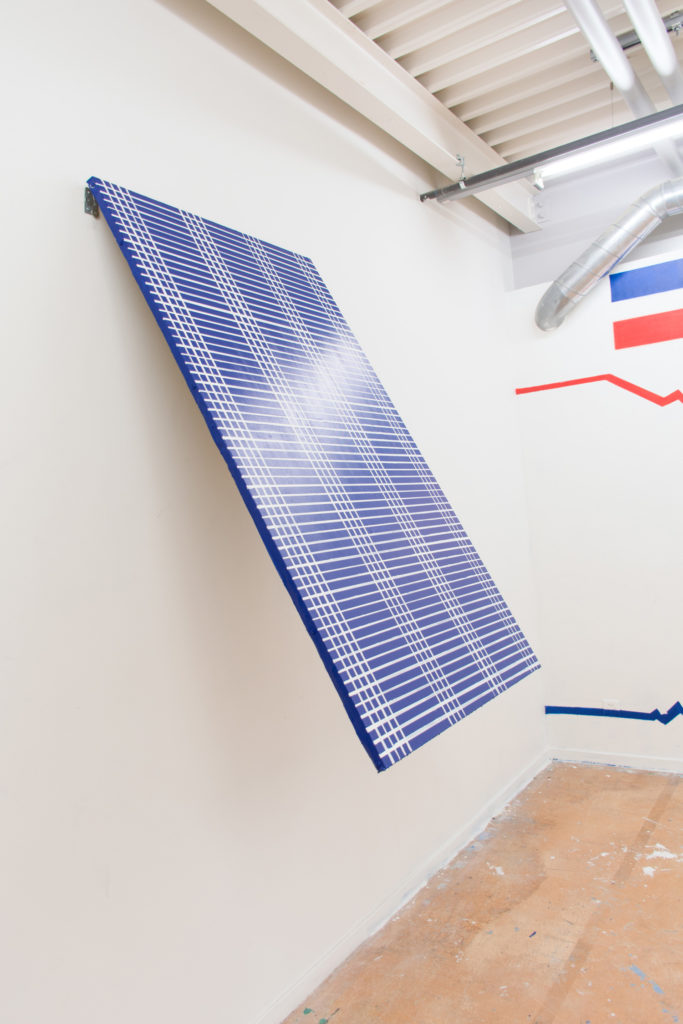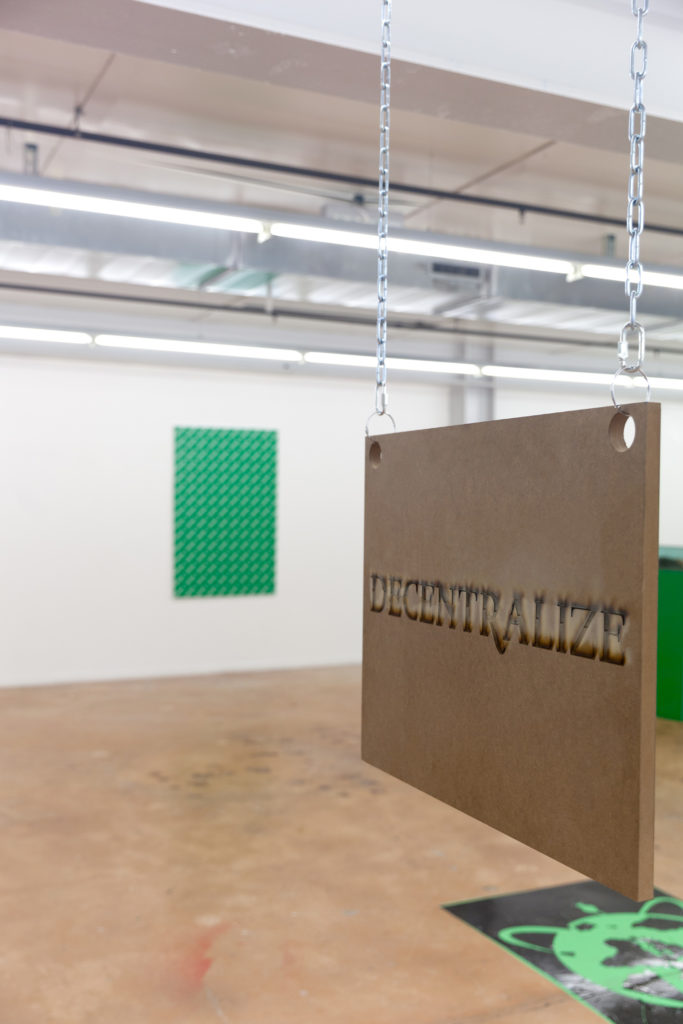Tudor Ciurescu
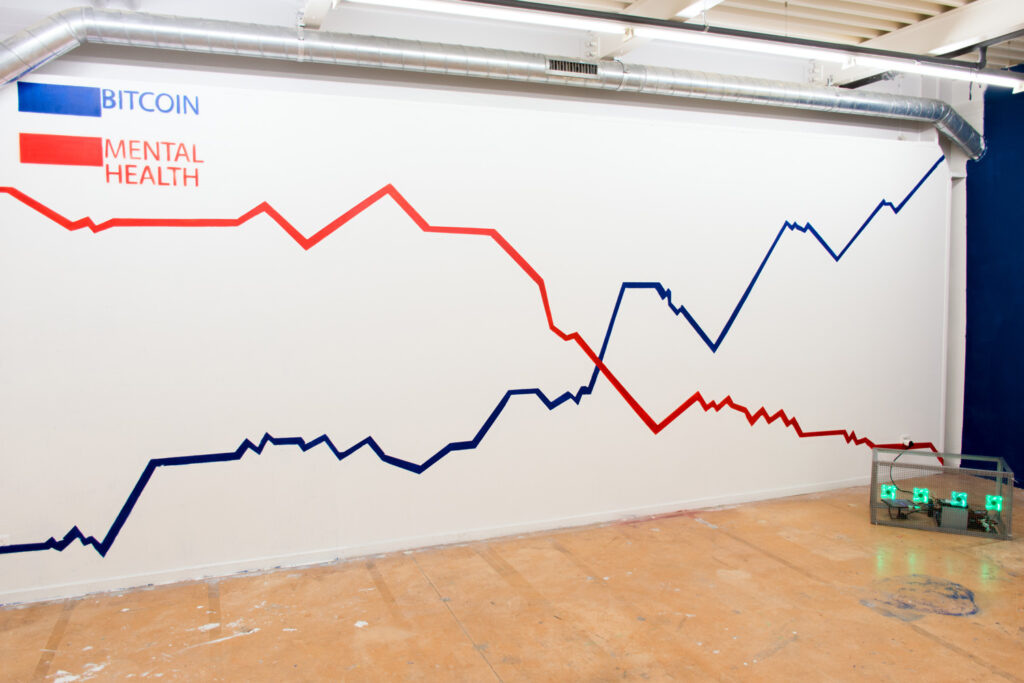
*Part of an Interview Series Taken by Sabin Borş in 2018
Tudor Ciurescu is a visual artist and student at École Cantonale d’Art Lausanne whose practice evolves around the interpretation of contemporary culture and the tech world, from bitcoin to memes.
Sabin Borş: What is the relation between your work, digital content, and the Internet?
Tudor Ciurescu: With digital content, I started literally at the age of 10, while uploading photos on forums and starting my own blog pretending I was 21. Funny is, I am 21 now and am actually more conscious of the web. It was funnier back then.
SB: Do you get all your ideas from the Internet, or do you use it simply to translate ideas from outside the Internet into a digital form?
TC: Both. I am interested in contemporary culture, which means having all-day conversations about what happened URL/IRL. Still, great AFK (away from keyboard) stories are the ones harder to translate digitally. And maybe that’s how it should be.
SB: Why is digital content more appealing than other media to express your ideas?
TC: Digital rhymes with introvert. As a shy kid back in 2003, dreaming about a computer while flipping through tech booklets, I used all my savings to buy one so it became the central piece of interest. It is the playground I enjoy the most. Also, being a digital artist in 2018 comes with some aesthetics attached, which I want to dismount in my case. Personally, I see a broader talk as a digital artist.
SB: Did anything influence your perspectives more decisively?
TC: Berlin Biennale 9 really changed my views.
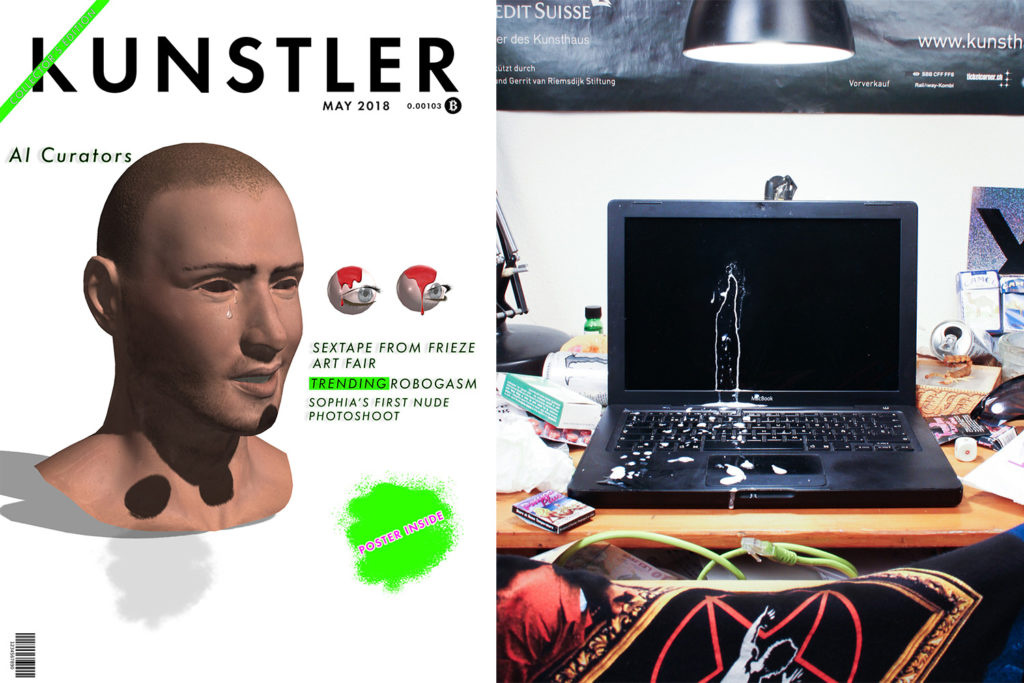
SB: In what way exactly? Was it the overall concept and ideas discussed here that made such an impression on you, or any particular works? How do you see these influences manifesting in your work?
TC: On how to act more critical to topics that surround me such as contemporary and tech culture. Like a kid from favelas who just saw Cristiano Ronaldo.
SB: If you were to describe your work in any way, how would you describe it?
TC: Absurdity is a recurrent feeling.

SB: What is most important for you in the equation between digital content and physical space? How did you respond to the challenges to far?
TC: The most important task for me is to translate my thoughts, most of which come from digital perspectives applied to the physical space. The physical work continues to get more attention than the digital one, so how can we make this gap easier to pass? There are certain materials that translate the digital into physical for me and which I use. So far, things have been going my way. And of things don’t apply to my practice, I take it as a challenge and flip the table.
SB: What is the most representative work you did until now?
TC: The crypto currency mining rig shown in a semestrial exam, subversive by using the school’s electricity and Internet to mine a coin that can later be used for in-school student needs.
SB: Could you please tell us more about your work Self-Portrait After Giacometti With Web History?
TC: As a kid I was fascinated by Giacometti’s works so it came natural that at some point a work would relate to him and my practice. It was done in 2016, while still in Bucharest’s school of Fine Arts, the use of materials can show that context, as if the work was done in the 70’s.
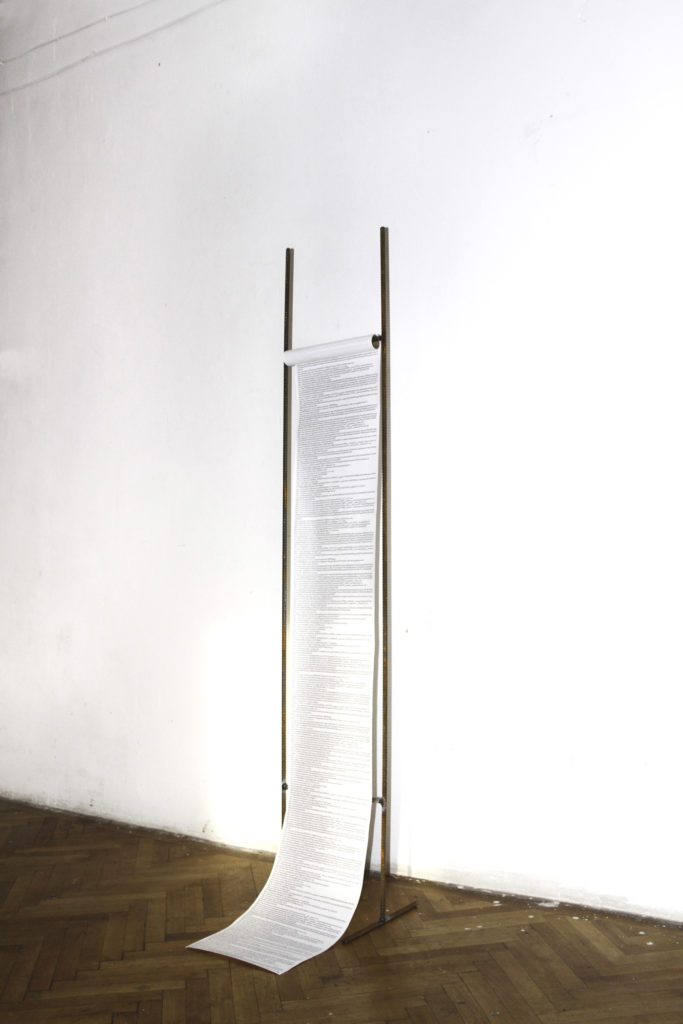
SB: What about one of your most recent works, Solar Painting Panel?
TC: It’s an example of how a present conversation topic is transformed into something physical and useless for it’s purpose, but good for continuing the conversation.Its role is best seen as if we were in 2040, 23 years later, which actually is not that much.
SB: How did you learn using the software and how important is technology for what you do?
TC: Friends and YouTube tutorials taught me all the things I know. The school I am in right now provided legal ways to access all the software. Taking all the rave weekends off and learning 3D is my new thing. Also Reddit—I ask questions every day and redditors are super helpful. Technology is pretty essential to my practice, be it talking about it through art works or using Instagram to show notes. I kind of fetishized technology design since I was a kid.
SB: Now that you mention this, how do you see the difference between digital art and technology design? Design more generally often has a very difficult relation to art, especially since the boundaries between the two are rather blurry.
TC: Well, design plays a good role for depicting the conversation of the tech world, for example the whole scenography used in a start-up convetion can be used in an art context for a better understanding of the movement. All the positivity that is presented during such a convetion is good material for a philosophical debate. While design resolves problems; art in such context helps to take pin points from the conversation and continue it.
SB: Do you think it would be important to include ‘digital art’ in the education curricula in Romania?
TC: was talking to Yung Jake for some stuff. Last year, I had a class with Alexandra Croitoru, a teacher whom I like. For her class, I had a deadline with a work on the relation between photography and drawing. As I was late, I told her I’ll do it in five minutes. I used the emoji.ink app developed by Yung Jake to recreate a photograph through emoji. I got an ‘mh’ in response and a grade that could almost pass the year. I’m sorry that this is the situation and that there is not more support. All these attempts are not understood in the Romanian context, which at a young age and will clearly change. Listen to the kids.
SB: Perhaps galleries and institutions are better positioned to deal with the specificities of working with digital content?
TC: They’re responding in a good way, from my perspective. Still, painting is not dead—and I just did one. Could this make me less of a digital artist? I really feel there is a tense feeling when it comes to what you should or shouldn’t do in art practices; and I am battling with it because I’ve got a constant flow of ideas coming from various domains.
SB: Has anyone attempted to give your works a specific denomination?
TC: New wave kids who were against what was told in schools… There is a box where people put me in, but because I do so many different works, it’s hard to label it. The context I come from has fuelled me with a need to try everything. There is surely in my practice a recurrent theme that curators can label, having to do with contemporary culture and technology.
SB: How do you see the use of digital media in Romania, in the field of art more specifically?
TC: Means of production in Romania leads to more digital manifestation, as it’s not easy to create physical objects which the artist is satisfied with. Also, I like how in Romania, the absurd humour appears in the works, related to post- communism—which I am part of too.
SB: Is the local scene affected by the changes in digital visual culture? What is it that will change in our relation to digital media and the Internet?
TC: There is more digital labor. Still, there are not so many people to mention, but they are cool and play an important role in Romania and internationally. Some are interviewed here and the rest are very close to. We get more conscious about the Internet—we’ll see how WEB 3.0 and decentralisation will change how we see it.
Tudor Ciurescu (b.1996) is a visual artist and student at École Cantonale D’Art, Lausanne. His practice is spread across different mediums, always experimenting with new image rendering techniques. The main subject of his work is the relation between object and image in contemporary Internet culture, from memes to Bitcoin, all seen through an absurd and comic lens.
Sabin Borș (b. 1981) is an independent editor and curator who also works as freelance layout designer for various web and print cultural projects. He is the founder and editor of the anti-utopias.com contemporary art platform and has been working for various specialised print and online media outlets in the field of art and architecture since 2009. In parallel with his Ph.D. thesis in philosophy—tackling the subject of archives, discourse, and contemporaneity—he started developing a multi-modal archival installation. The installation is intended as a critical approach to constructing cross-cultural and cross-disciplinary frameworks for the documentation, interpretation, and dissemination of contemporary art, providing alternative understandings of the socio-political foundations of art, constituent cultural differences and transitions, or superposed cultural, scientific, and technological interactions. He takes particular interest in dialogical constructions that create divergent networks of meaning between mediums, disciplines, and practices.
